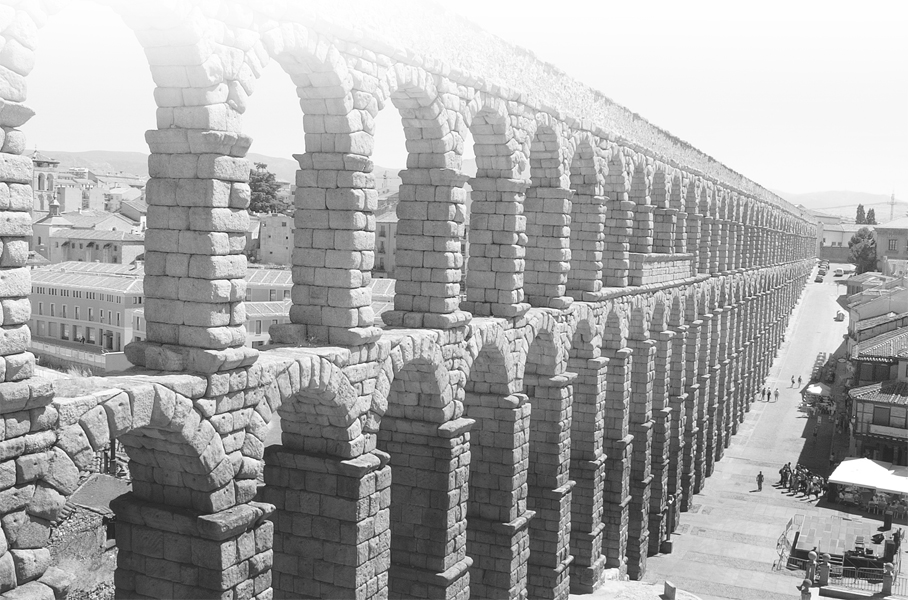Chapter Eight
History, Heritage, and Future
Chapter Outline
- Introduction
- Introductory Case Study: The National Road
- Themes
- Transportation
- Water Distribution and Treatment
- Wastewater Conveyance and Treatment
- And Then There Was More…
- The Future
- Outro
Learning Objectives
After reading this chapter, you should be able to:
- List the landmark events in the historical evolution of roads, canals, bridges, water distribution, water treatment, wastewater conveyance, and wastewater treatment.
- Explain how technology has been integral in the historic development of infrastructure.
- State examples of lessons that modern engineers can learn by studying the history of infrastructure.
Introduction
In prehistoric times, there was no need for an infrastructure, and no ability to build one. There was no need to transport goods because there were no goods to transport. Before agriculture, there was no need to build irrigation systems. Without permanent residences, there was no need to try to control floods by building levees and dams.

This all changed about 10,000 years ago with the Neolithic (agricultural) Revolution. People transitioned from hunting and gathering to raising crops and forming settlements. As these ancient people started living together in settlements, the need for infrastructure became apparent. For example, there was a need for defense, such as a wall or fence surrounding the ...
Get Introduction to Infrastructure: An Introduction to Civil and Environmental Engineering now with the O’Reilly learning platform.
O’Reilly members experience books, live events, courses curated by job role, and more from O’Reilly and nearly 200 top publishers.

